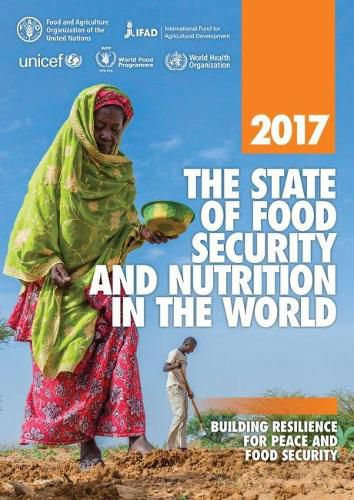Readings Newsletter
Become a Readings Member to make your shopping experience even easier.
Sign in or sign up for free!
You’re not far away from qualifying for FREE standard shipping within Australia
You’ve qualified for FREE standard shipping within Australia
The cart is loading…






The international community is committed to ending hunger and all forms of malnutrition worldwide by 2030. While much progress has been made, conflict and human-induced and natural disasters are causing setbacks. This year’s The State of Food Security and Nutrition in the World warns that the long-term declining trend in undernourishment seems to have come to a halt and may have reversed, largely on account of the above-mentioned factors. Meanwhile, though progress continues to be made in reducing child malnutrition, rising overweight and obesity are a concern in most parts of the world. These and other findings are detailed in the 2017 edition of The State of Food Security and Nutrition in the World (formerly, The State of Food Insecurity in the World). For the first time, this year’s report is published by an expanded partnership, with UNICEF and WHO now joining FAO, IFAD and WFP. The report also marks a new era in the monitoring of food security and nutrition in the context of the 2030 Agenda for Sustainable Development and the UN Decade of Action on Nutrition. To assess progress made towards the goal of ending hunger, the report uses both the traditional measure of the prevalence of undernourishment and a new indicator, the prevalence of severe food insecurity, based on the Food Insecurity Experience Scale. The report further looks at various forms of malnutrition, including trends and situations for child stunting, wasting and overweight and for adult obesity, breastfeeding and anaemia in women. The thematic part of the report sheds light on how the increasing incidence of conflict in the world is affecting food security and nutrition. It also explores how, by improving food security and nutrition and by making rural livelihoods more resilient, it is possible to help prevent conflicts and sustain peace.
$9.00 standard shipping within Australia
FREE standard shipping within Australia for orders over $100.00
Express & International shipping calculated at checkout
The international community is committed to ending hunger and all forms of malnutrition worldwide by 2030. While much progress has been made, conflict and human-induced and natural disasters are causing setbacks. This year’s The State of Food Security and Nutrition in the World warns that the long-term declining trend in undernourishment seems to have come to a halt and may have reversed, largely on account of the above-mentioned factors. Meanwhile, though progress continues to be made in reducing child malnutrition, rising overweight and obesity are a concern in most parts of the world. These and other findings are detailed in the 2017 edition of The State of Food Security and Nutrition in the World (formerly, The State of Food Insecurity in the World). For the first time, this year’s report is published by an expanded partnership, with UNICEF and WHO now joining FAO, IFAD and WFP. The report also marks a new era in the monitoring of food security and nutrition in the context of the 2030 Agenda for Sustainable Development and the UN Decade of Action on Nutrition. To assess progress made towards the goal of ending hunger, the report uses both the traditional measure of the prevalence of undernourishment and a new indicator, the prevalence of severe food insecurity, based on the Food Insecurity Experience Scale. The report further looks at various forms of malnutrition, including trends and situations for child stunting, wasting and overweight and for adult obesity, breastfeeding and anaemia in women. The thematic part of the report sheds light on how the increasing incidence of conflict in the world is affecting food security and nutrition. It also explores how, by improving food security and nutrition and by making rural livelihoods more resilient, it is possible to help prevent conflicts and sustain peace.